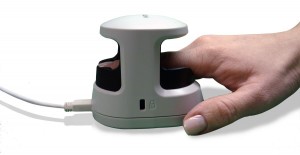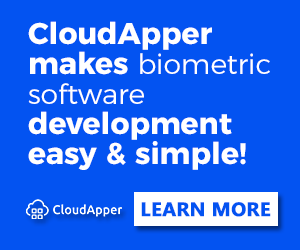False Rejection Rate – What Does It Mean And Why Should I Care?
 You decided you want to use biometrics in your business. Check.
You decided you want to use biometrics in your business. Check.
You have researched what biometric readers are available and decided on one. Check.
You have solicited price quotes from biometric providers based on your project specifications. Check.
You asked all of the right questions to the biometric providers about which biometric reader is best for your unique situation. Fail.
It is a well known fact that most people who are researching a switch to biometrics as a method to update their identification and authentication policies in areas such as workforce management, point of sale, membership management or access control may not understand which proper biometric reader should be used that is most suitable for their place of business. Some common questions to ask when researching biometric readers are:
- How demographically diverse is my workforce?
- What is the age range of the people using the biometric reader?
- What type of physical environment will the biometric reader be deployed in?
- How large will my database be of enrolled individuals in the system?
Choosing the proper biometric reader for your workforce and environment can be better served by researching the answers to these questions before you make your decision so you end up using a reader that is user friendly and will provide you with the highest degree of accuracy and longevity.
What is False Rejection Rate (FRR)? Why is it an Issue?
False reject rate is a statistic used to measure biometric performance when operating in the verification task and it usually calculated as the percentage of times the system produces a false reject. A false reject occurs when an individual is not matched to their own existing biometric template. For example: John claims to be John, but the system incorrectly denies the verification. This can be particularly frustrating for an end user who knows that they are enrolled in the system and should be recognized and verified, but for some reason the system is incorrectly rejecting their scan. This can cause unnecessary logjams, affect service, frustrate staff and negatively impact productivity.
Does the Type of Biometric Reader I Use Affect the FRR?
Biometric readers have different characteristics and limitations that make them susceptible to increased levels of FRR’s. When you deploy a biometric system, after installing the software and connecting the biometric reader an enrollment template must be created for each individual that will be using the system. Any subsequent biometric scans are then matched against that template which means that that the integrity of the template must be high quality to avoid problems with FRR. In addition, with a fingerprint reader, peripheral conditions such as age, dirty fingers or the ethnicity of the end user can adversely affect the performance of the biometric matching and raise the FRR.
As you climb the scale of biometric devices to vascular biometric recognition (fingervein and palm vein readers) FRR percentages drop significantly because fingerprint integrity is not a factor when matching a scan to an enrollment template. Vascular biometrics uses near infrared scans to capture the vein patterns beneath the finger or the palm for recognition and identification purposes resulting in increased accuracy. However, even vascular technology is not impervious to FRR.
Training and Procedural Issues Can Affect FRR
Earlier, we explained that factors like poor enrollment templates, fingerprint integrity, age and ethnicity may affect the ability of a fingerprint reader to work properly when scanning an individual but often times when an end user deploys fingervein or palm vein hardware devices, training or procedural issues cause FRR to rise. When biometric vein recognition devices are set up, FRR is inherently lower than fingerprint readers due to the advanced biometric technology that powers biometric hardware but FRR can be raised if an end user is not properly trained on how to use the device or is properly trained but does not follow the correct training procedures. Furthermore, if an individual is not scanning their finger or palm properly when using a biometric device, FRR can be artificially boosted to levels higher than normal.
Relax, Don’t Panic and Ask the Right Questions
When researching a biometric software and hardware provider, make sure to give as many details as possible to companies you are contacting for solutions. Describe in detail the demographics of your end users. Talk about the physical environment that your biometric readers will be deployed. Find out the intricacies of their training and support policies and procedures. Ask a lot of questions. If you are nervous about choosing the wrong biometric reader, call us or e-mail us and we will probe and help make it easier for you to get the solution that works. Check out some of our videos that explain the biometric devices that we carry.
Are you asking the right questions?














found your site on del.icio.us today and really liked it.. i bookmarked it and will be back to check it out some more later
Pingback: How To Properly Clean Biometric Hardware - M2SYS Blog On Biometric Technology